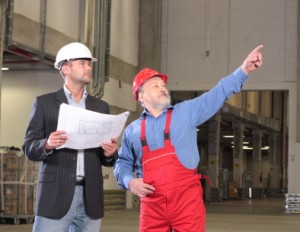 The chairman and CEO of Loews Hotel spent a week working the front desk and carrying luggage for the reality show Down the Ladder. Jon Tisch’s eye-opening experience led to some significant changes in policy for the multimillion-dollar luxury hotel chain.
The chairman and CEO of Loews Hotel spent a week working the front desk and carrying luggage for the reality show Down the Ladder. Jon Tisch’s eye-opening experience led to some significant changes in policy for the multimillion-dollar luxury hotel chain.
By the end of the week, Tisch had a new awareness of and respect for the tough work his employees do every day. As reported by Sanyin Siang, executive director of the Coach K Center on Leadership and a contributor to the Huffington Post, “His employees now know and feel that [Tisch] gets it and that he gets them.”
In business as in life, it’s a great challenge for all of us to see things from someone else’s point of view, but for effective leadership, you need to understand how another person sees the world and lead from there.
When you walk in another person’s shoes, great things can happen.
You build trust. The connection between leader and followers grows stronger. “Leaders get a feel for the language and analogies that would resonate better with followers,” Siang notes.
You provide better feedback. When employees feel the CEO understands what they do, it’s easier for them to accept criticism that improves their performance. Also, there’s less of the kind of criticism that fails to account for the realities of an employee’s workload.
As Siang points out, “It’s much easier to criticize and point out the things that are wrong when there isn’t a full sense of the obstacles that might be in the way.”
You strengthen collaboration. Following the experience of walking in that other person’s shoes, there’s a much greater sense among both leader and employees that we’re all in this together. Because “leaders and followers can better see the contribution that each brings,” it’s possible to seize on opportunities “beyond each other’s limited understanding.”
Of course, most CEOs and business owners don’t have the time to literally assume the job duties of their employees, but there are ways that leaders can gain a deeper understanding of their employees’ perspectives and actions:
The best teachers ask questions, listen carefully to the answers and “then relay the lesson … in a way that is tailored to the students’ frame of reference.”
That’s what Jon Tisch has done. As Siang reports, his personal experience led to the creation of a new Loews Hotels policy. For one day every year, “his executives need to take on the jobs of their employees.”
How can you learn to walk in your employees’ shoes?
